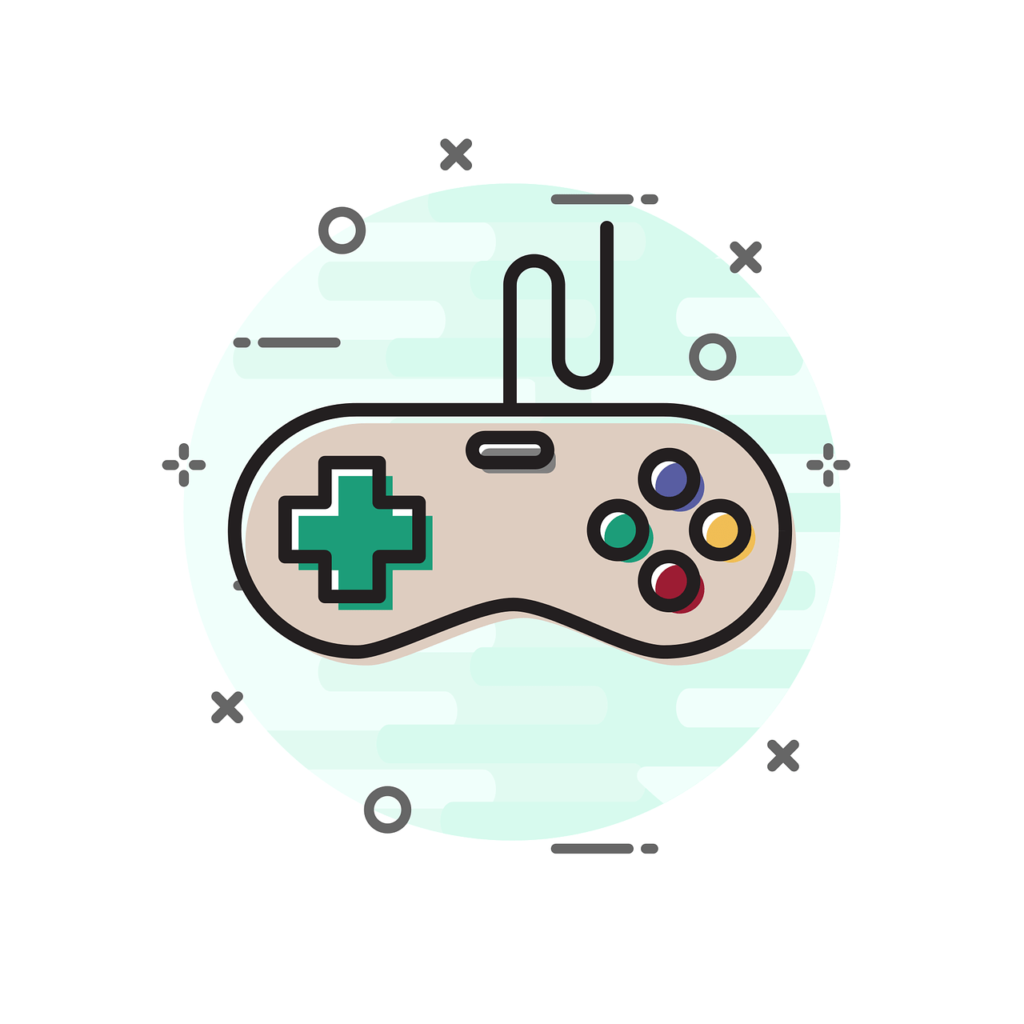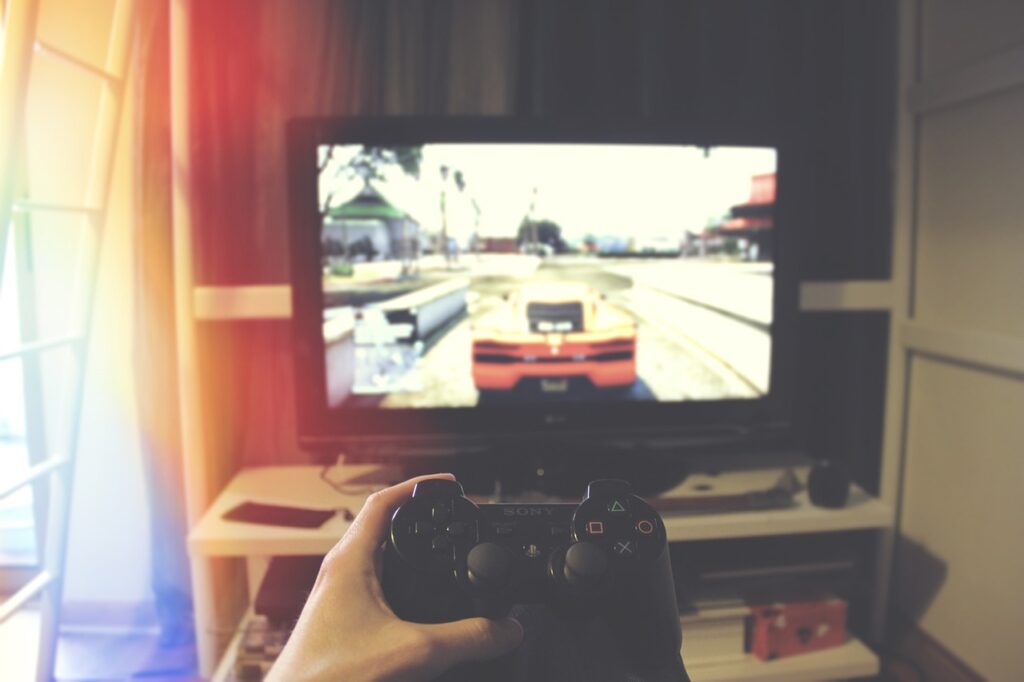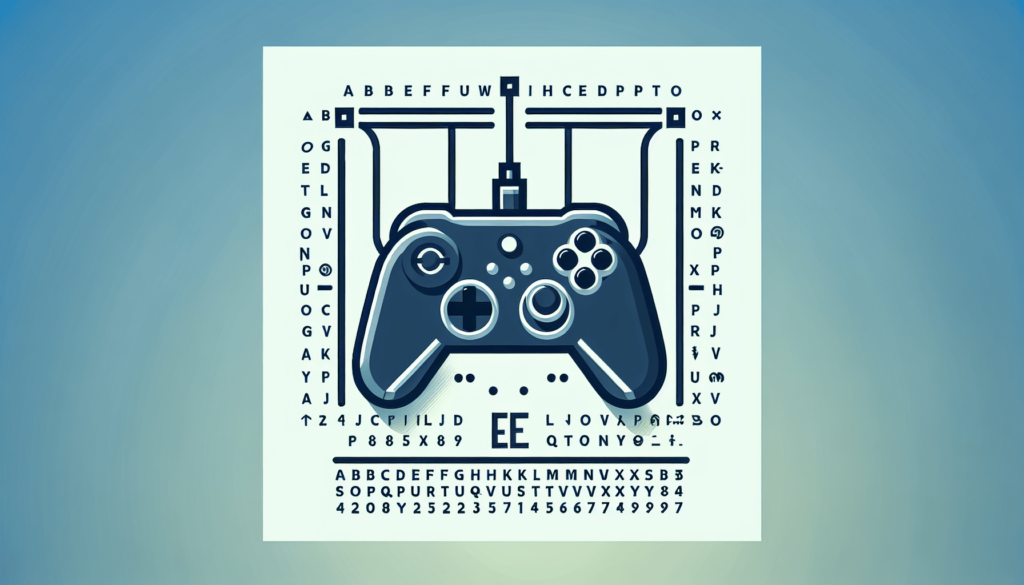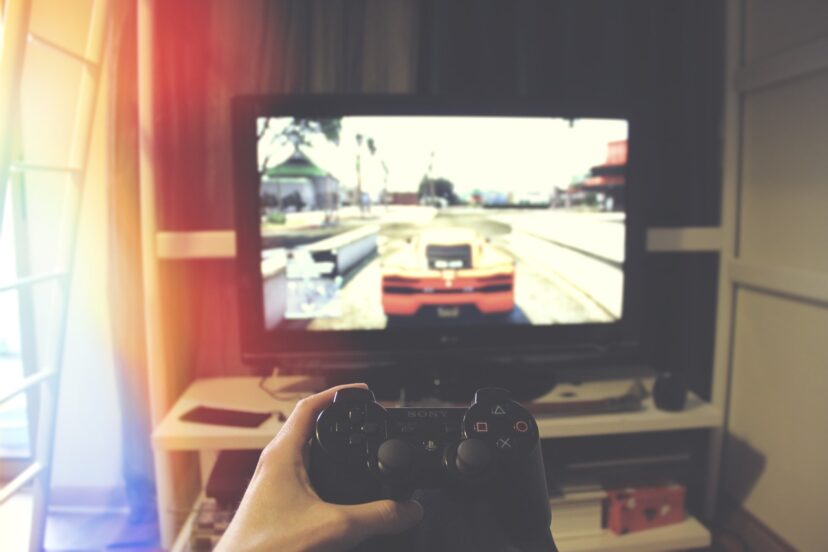How Do I Connect A Gaming Controller To My PC?
Are you an avid gamer who wants to enhance your gaming experience on your PC? Look no further! In this article, we will guide you through the simple and straightforward steps on how to connect a gaming controller to your PC. Whether you prefer a wireless or wired connection, we’ve got you covered. Get ready to immerse yourself in your favorite games with the help of a gaming controller and enjoy a whole new level of gaming excitement.

Check compatibility
Check the type of gaming controller
Before connecting a gaming controller to your PC, it is essential to determine the type of controller you are using. Different gaming controllers have different connection options and compatibility requirements. They can be broadly categorized into wired and wireless controllers. By checking the type of gaming controller you have, you can ensure the necessary steps are taken for a successful connection.
Check if the controller is compatible with your PC
Once you have identified the type of gaming controller you have, the next step is to check if it is compatible with your PC. Compatibility can vary depending on factors such as the operating system of your PC and the specific requirements of the gaming controller. By verifying compatibility, you can avoid any potential issues that may arise during the connection process.
Verify the operating system requirements
In addition to checking the compatibility of your gaming controller with your PC, it is essential to verify the operating system requirements. Some gaming controllers may have specific operating system requirements, and ensuring your PC meets these requirements is crucial for a seamless connection. By verifying the operating system requirements, you can avoid any compatibility issues and ensure a smooth gaming experience.
Wired Connection
Connect via USB cable
Connecting your gaming controller to your PC using a USB cable is one of the simplest and most common methods. To do this, you will need a USB cable that is compatible with your gaming controller. After ensuring that your gaming controller is powered on, connect one end of the USB cable to the controller and the other end to an available USB port on your PC. Your PC should automatically detect the controller, and you should be able to use it for gaming immediately.
Install necessary drivers
In some cases, your PC may require you to install specific drivers for your gaming controller to function correctly. These drivers allow your PC to communicate with the gaming controller effectively. If your PC does not automatically install the necessary drivers, you can usually find them on the manufacturer’s website or included with the controller itself. Follow the installation instructions provided by the manufacturer to install the drivers and ensure optimal performance.
Calibrate the controller
After connecting your gaming controller via USB and installing any necessary drivers, it is a good idea to calibrate the controller. Calibration ensures that the controller’s inputs are accurately recognized by your PC, resulting in a more precise gaming experience. To calibrate your controller, access the “Controllers” or “Game Controllers” section in your PC’s settings. From there, you should be able to find an option to calibrate your gaming controller. Follow the on-screen instructions to complete the calibration process.

Wireless Connection
Connect using Bluetooth
If your gaming controller supports wireless connectivity via Bluetooth, you can connect it to your PC wirelessly for a more convenient gaming experience. To connect using Bluetooth, ensure that your PC has Bluetooth capabilities. Enable Bluetooth on your PC and put your gaming controller into pairing mode. Consult the manual or manufacturer’s instructions for your specific controller to learn how to enable pairing mode. Once the controller is in pairing mode, use your PC’s Bluetooth settings to search for and connect to the controller. Once connected, you should be able to use your gaming controller wirelessly.
Connect using a wireless adapter
In case your gaming controller does not have built-in Bluetooth, you can still connect it wirelessly to your PC using a wireless adapter. Wireless adapters are USB devices that provide the necessary wireless connectivity for your controller. To connect using a wireless adapter, plug the adapter into an available USB port on your PC. Follow the manufacturer’s instructions for the adapter to pair it with your gaming controller. Once the adapter and controller are paired, you can enjoy wireless gaming without the need for a direct USB connection.
Pair the controller with your PC
After establishing the wireless connection using Bluetooth or a wireless adapter, you will need to pair the gaming controller with your PC. This pairing process ensures that your PC recognizes and connects to the controller wirelessly. The steps to pair the controller may vary depending on the specific controller model and your PC’s operating system. Refer to the controller’s manual or the manufacturer’s instructions for detailed information on the pairing process.
Ensure the controller is in pairing mode
Before attempting to pair your gaming controller with your PC, it is essential to ensure that the controller is in pairing mode. Pairing mode allows the controller to be discovered and connected to your PC. Consult the manual or manufacturer’s instructions for your specific controller to learn how to enable pairing mode. Once the controller is in pairing mode, follow the instructions for your PC’s Bluetooth settings or wireless adapter to complete the pairing process.
Steam Controller
Enable Steam Big Picture Mode
If you own a Steam Controller, you can enhance your gaming experience by enabling Steam’s Big Picture Mode. Big Picture Mode optimizes the Steam interface for controller use, allowing for a more user-friendly and immersive gaming experience. To enable Big Picture Mode, open the Steam application on your PC and navigate to the “Steam” menu. From there, select “Settings” and then “Interface.” Check the box that says “Enable the Big Picture Mode when a controller is connected” and click “OK” to save the changes.
Connect via USB or Bluetooth
The Steam Controller provides the flexibility of connecting to your PC either through a USB cable or via Bluetooth. To connect via USB, simply plug one end of the USB cable into the Steam Controller and the other end into an available USB port on your PC. For a Bluetooth connection, put the Steam Controller into pairing mode and use your PC’s Bluetooth settings to search for and connect to the controller. Choose the connection method that suits your preferences and hardware availability.
Configure the controller settings
Once your Steam Controller is connected to your PC, you can further tailor its functionality and behavior to suit your gaming needs. Steam provides a wide range of customization options, allowing you to configure button mappings, sensitivity, and other settings. To configure your Steam Controller, open the Steam application on your PC, go to the “Steam” menu, and select “Settings.” From there, navigate to the “Controller” section, where you can explore and customize various aspects of your Steam Controller’s settings.

Controller Software
Download and install controller software
Some gaming controllers require specific software to be installed on your PC for optimal performance. This controller software often provides additional features and functionalities not available through generic drivers. To download and install the controller software, visit the manufacturer’s website and search for the appropriate software for your controller model. Follow the instructions provided by the manufacturer to download and install the software onto your PC.
Follow the software instructions for connection
Once you have installed the controller software, follow the instructions provided by the software to establish a connection between your gaming controller and your PC. These instructions may involve connecting the controller using a USB cable, enabling Bluetooth pairing, or using a wireless adapter. Be sure to carefully read and follow the software’s instructions to ensure a successful connection.
Configure controller settings
After establishing a connection, you may have the option to configure specific settings for your gaming controller through the software. These settings can range from button assignments to sensitivity adjustments and can significantly enhance your gaming experience. Explore the software’s interface and follow the provided options to customize your controller settings according to your preferences. Take your time to experiment with different settings to find the perfect configuration for your gaming needs.
Troubleshooting
Check for firmware updates
If you encounter any issues with your gaming controller’s functionality or connection, one of the first steps to take is checking for firmware updates. Firmware updates often address bugs, improve controller performance, and enhance compatibility. Check the manufacturer’s website or the controller software for firmware updates specific to your gaming controller model. Follow the provided instructions to download and install any available updates, as they can potentially resolve the problems you are experiencing.
Restart your PC and controller
Sometimes, a simple restart can solve connection or functionality issues with your gaming controller. Restart your PC and power off your controller completely. After a few moments, turn on your controller and allow it to reconnect to your PC. Similarly, restart your PC to refresh its system processes and ensure a clean start. This straightforward troubleshooting step can often resolve minor issues and bring your gaming controller back to its optimal state.
Ensure proper connection
If your gaming controller is not functioning correctly or disconnecting intermittently, a loose or faulty connection could be the culprit. Check that all cables and connections are securely plugged in. If using a wireless connection, ensure that your controller and PC are within a reasonable range, and there are no obstacles interfering with the signal. A stable and secure connection is pivotal for an uninterrupted gaming experience.
Verify controller settings
If you experience unusual behavior or unexpected responses from your gaming controller, it is worth double-checking the controller settings. Take a moment to review and ensure that the controller settings are correctly configured according to your preferences. Changes in settings or accidental modifications can lead to undesirable controller behavior. Make any necessary adjustments or revert to default settings if needed.

Custom Mapping
Use third-party software for custom mapping
While some gaming controllers come with built-in customization options, others may require third-party software to enable advanced custom mapping. These software solutions allow you to remap controller buttons to specific keyboard inputs or even create macros for complex in-game actions. Search online for reputable third-party software that is compatible with your gaming controller and explore the possibilities it offers for custom mapping.
Map controller buttons to keyboard inputs
Custom mapping enables you to personalize your gaming experience by assigning different keyboard inputs to specific controller buttons. This functionality allows you to create a control scheme that suits your play style and preferences. With compatible software, you can map buttons to keyboard keys, mouse inputs, or even combinations of inputs, enhancing your ability to interact with games in a way that feels natural and intuitive.
Save and apply custom configurations
Once you have customized the button mappings and configurations for your gaming controller, it is essential to save and apply these settings. This ensures that your customizations persist across different gaming sessions and are readily available whenever you connect your controller. Depending on the software you are using, you may have the option to save your custom configurations as profiles or load different profiles for different games. Take advantage of these features to streamline your gaming experience and eliminate the need for repetitive customization.
Emulators and Retro Games
Install emulator software
If you are interested in playing retro games or using emulators on your PC, you can still connect your gaming controller for an authentic and immersive experience. To get started, you will need to install emulator software on your PC. Emulators replicate the functionality of older gaming consoles, allowing you to play a wide range of retro games. Browse online for reputable emulator software compatible with your desired retro gaming console and follow the installation instructions provided.
Configure controller settings in emulator
To ensure smooth and accurate gameplay while using emulators, it is important to configure the controller settings within the emulator software. These settings may involve mapping controller buttons to specific console inputs or selecting the appropriate controller profile for the emulated console. Each emulator has its own set of configuration options, so refer to the emulator’s documentation or online resources for detailed instructions on how to configure your gaming controller within the emulator.
Load and play retro games
Once you have installed emulator software and configured your gaming controller, you can start enjoying retro games on your PC. Obtain ROM files of the retro games you wish to play and load them into the emulator software. With your gaming controller connected and properly configured, you can navigate through the emulator’s menu and launch your selected game. Immerse yourself in nostalgia and relive timeless gaming experiences with the added convenience and precision provided by your gaming controller.
Other Considerations
Battery life and charging
For wireless gaming controllers, battery life is an important consideration. Different controllers have varying battery capacities, and the battery life can impact your gaming experience. Be mindful of the battery level and plan accordingly for uninterrupted gaming sessions. If your controller has a rechargeable battery, make sure to charge it fully before extended gaming sessions to avoid unexpected interruptions or loss of power.
Controller compatibility with specific games
While most gaming controllers work well with a wide range of games, there may be instances where specific games require specific controller compatibility. Certain games may have specific controller profiles to optimize gameplay or incorporate unique features. Before diving into a new game, check the game’s requirements or compatibility information to ensure that your gaming controller is fully supported. This will help you make the most out of your controller’s capabilities and enjoy a seamless gaming experience.
Controller settings within game options
In addition to configuring your gaming controller’s settings externally, many games offer in-game options to further customize the controller experience. These options often include sensitivity adjustments, button remapping, and other settings specific to the game’s mechanics. Take a moment to explore the game’s settings menu and experiment with different controller settings to find the configuration that suits your gameplay style and preferences. Fine-tuning these settings can greatly enhance your gaming performance and overall enjoyment.
Conclusion
Connecting a gaming controller to your PC enhances the gaming experience
Connecting a gaming controller to your PC opens up a whole new world of gaming possibilities and enhances the overall gaming experience. Whether you prefer a wired or wireless connection, there are several methods available to connect your gaming controller to your PC, each with its own advantages and considerations. By following the instructions specific to your controller model and taking into account the outlined steps and considerations, you can seamlessly integrate your gaming controller into your PC gaming setup.
Follow the instructions specific to your controller model
When connecting a gaming controller to your PC, it is crucial to follow the instructions provided by the controller’s manufacturer. Each gaming controller may have unique requirements and connection processes that differ from the general guidelines outlined in this article. By following the specific instructions for your controller model, you can ensure a successful connection and optimize your gaming experience. Happy gaming!




